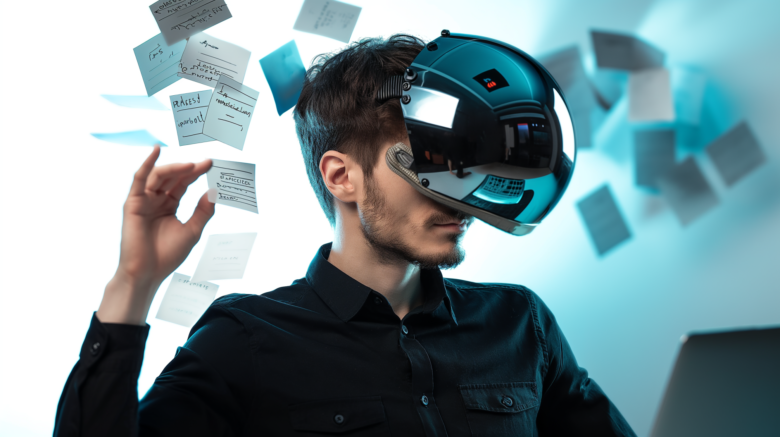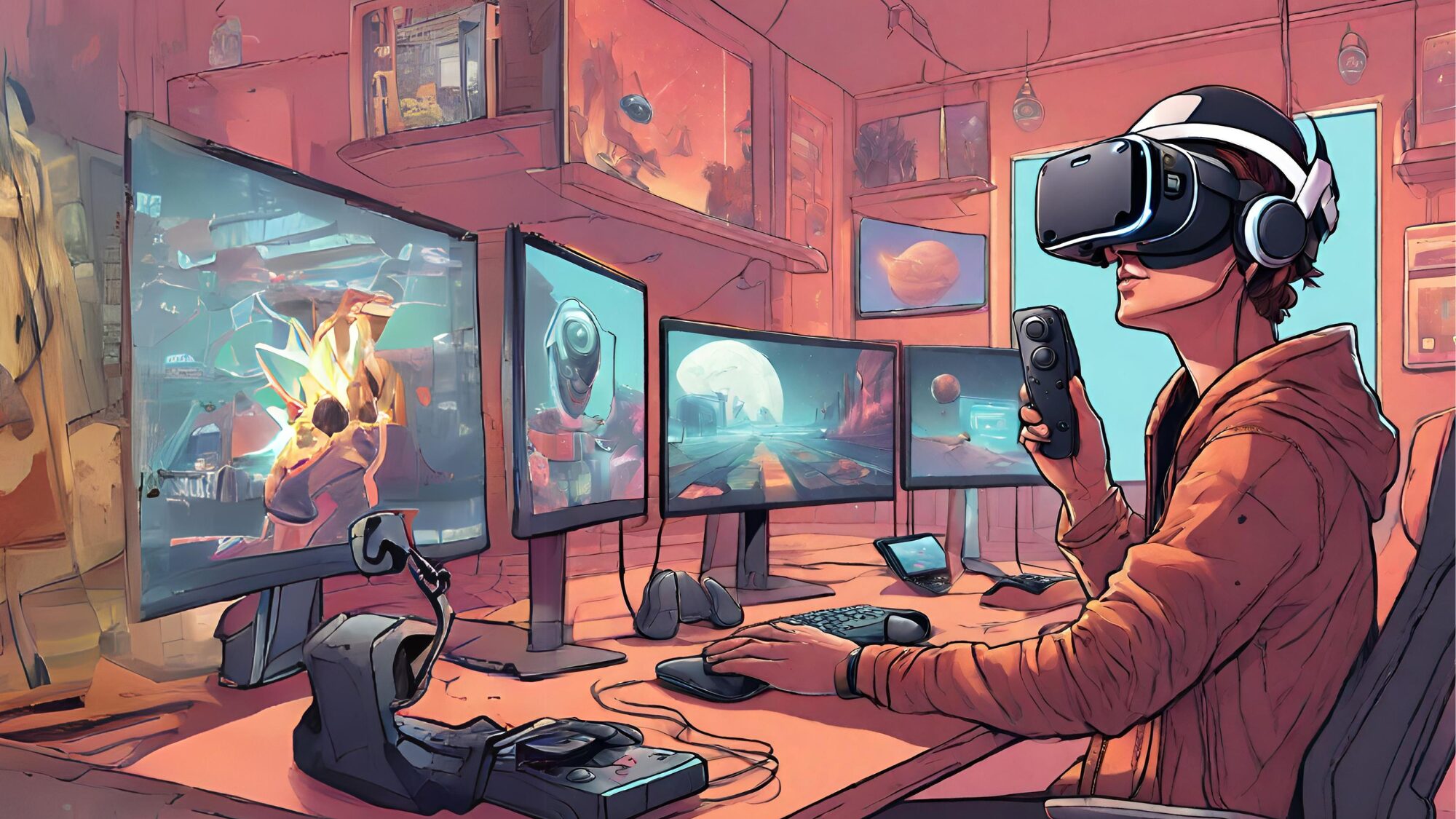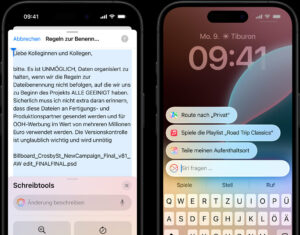Why UX is broken – and how AI can fix it

Nelio de Barros, the author of this article, is a senior UX manager with a strong focus on the interplay between design, artificial intelligence (AI), and User Experience (UX). Based in Zürich, he is one of the UX gurus and managing partners of Brandly Digital.
Brandly Digital is an award-winning branding and UX/UI design studio helping people and organizations resonate with their customers and stand out as industry leaders. As brand musketeers, the Brandly team helps businesses express their ideas and find a voice. Brandly Digital is one of the few studios that actively enforces AI into the workflow to help leaders, startups, and businesses adopt a more positive and effective approach toward AI.
In the digital realm, UX is key to success for modern businesses. Beyond aesthetics, it’s about understanding user needs, fostering trust, and building loyalty. A seamless UX isn’t just a convenience – it’s a strategic necessity that reduces bounce rates, boosts conversions, and sets brands apart in a competitive landscape.
Why is ‘Traditional’ UX Broken?
Having worked in a few startups and Fortune 500 companies, I often see red flags in User Experience (UX) and design, despite using proven design thinking methodologies and real data, UX designers frequently struggle.
While I do believe that UX is key to success, the reality I have experienced reveals that UX is either ignored or simply remains a buzzword in many industries where UX maturity is low. “Traditional UX” is often broken, because it takes time to get it right. Most managers exchange the “get right” part with a “ship it fast”, often choosing an aesthetically pleasing appearance over a product that works well.
From a formal design perspective there are also several problems:
- One size doesn’t fit all: UX design usually focuses on the ‘average’ user at the middle of the Bell Curve. This means designers create features that work well for most people but may not be ideal for anyone. The problem is that this method can overlook the special needs and preferences of users who aren’t average, such as power users or those using it uniquely. For example, imagine a music app designed for the average listener. It might be great for casual listening yet it might lack advanced features for enthusiasts interested in exploring obscure genres. These enthusiasts, who are often brand ambassadors, are an important part of the audience, but the design made for the ‘average user’ doesn’t fully cater to their needs.
- Limited Personalization: Standard UX methodologies, which include researching user needs, designing, user testing, and refining, often offer limited personalization, lead to a one-size-fits-all design that may not resonate with or meet the specific needs of every user, or evolving circumstances over time.
- Static Visual Design: Traditional UX design is often static, meaning it doesn’t easily adapt or change based on individual user interactions or changing market conditions. This rigidity can make the design less engaging, and give users fewer reasons to re-visit your product, especially for users who don’t fit into the average user category.
- Inefficient Design Cycles: Traditional UX design cycles often involve lengthy processes of discovery, prototyping, developing, launching, learning from user interactions, and iterating. This can be time-consuming, as each cycle of gathering feedback, implementing changes, and re-launching takes significant time, delaying the optimization of the user experience.
From the Practice: Good vs. Bad UX
The old UX methods, with their focus on average users and prolonged design cycles, often fail to address all users’ diverse needs and swiftly adapt to feedback, leading to less inclusive and slower-evolving user experiences, while also adding business costs.
For example, many local government websites highlight common UX pitfalls. Outdated designs often lead to cluttered layouts, small fonts that are hard for seniors or non-tech-savvy folks, and complicated navigation, significantly hindering user accessibility and clarity. This results in user frustration and difficulty in completing tasks. Just as clear navigation and legible content can transform these websites, clear headings and straightforward language can vastly improve the readability and effectiveness of written material.
In contrast, Airbnb stands out for its user-friendly interface, showcasing the principles of simplicity and intuitiveness in UX design. The ease of navigating its website and app, coupled with a straightforward booking process, ensures that users can find and reserve accommodations with minimal effort. This reflects how clear, concise writing enhances reader understanding and engagement, emphasizing the importance of structure and accessibility in both digital and written content.

How does AI change UX?
Artificial Intelligence (AI) is redefining UX design in ways we could not predict even a few months ago. Several key factors drive this shift:
- Personalization at Scale: AI’s ability to analyze vast data sets allows for creating unique user experiences tailored to individual preferences. If you have a website, you can imagine having a unique homepage for every single user visiting your site for example. This level of personalization significantly boosts user satisfaction and engagement, surpassing the capabilities of manual design and content creation methods.
- Predictive User Assistance: AI’s predictive nature means it can anticipate and fulfill user needs proactively, rather than reactively. This makes the user experience more intuitive and efficient, as AI interfaces can assist users even before they explicitly ask for it.
- Automated User Research and Testing: AI tools are now able to streamline user research and testing, rapidly collecting and analyzing feedback. This helps in quickly identifying and addressing user pain points, ensuring the UX evolves continually based on real user data, but not requiring long cycles of research and user interviews. The cost is significantly lower while the number of insights will increase proportionally.
- Voice and Conversational Interfaces: While voice assistants like Alexa offer some benefits, they haven’t fully delivered on the promise of a personal assistant, impacting the wider adoption of voice interfaces. This happens because they are mostly driven by scripts, have a limited ability to process new information and make decisions, and lack the degree of precision that visual interfaces can have. After all, elevated AI-based voice assistants have the potential to replace complex interfaces with more precision and adaptability to individual users and requests.
- Dynamic Visual Design: AI-driven tools aid designers in creating visually appealing and effective user interfaces. These tools can propose design modifications, generate layouts, and even create design elements. New designs can also be generated on the fly, directly adapting to the context of the user, and without the input of a designer.
In a nutshell, AI has brought a path to revolutionize UX by offering unprecedented efficiency, personalization, and deep user insights, leading to more user-centric, intuitive, and responsive digital products.
Approaching the New Era of AI in UX Design
As we step into this new era of UX design where AI plays a crucial role, it’s important to adapt our approach to stay ahead. Here’s how:
- Dynamic User-Driven Products: User needs and behaviors will shape products dynamically. AI enables this by adapting the product based on real-time user interactions, ensuring that the user experience is always evolving and relevant.
- Content is Crucial: With dynamic interfaces increasingly built around content, prioritizing high-quality, relevant content becomes essential. AI can tailor both interfaces and dynamic content to individual users, making it a central element of the UX design.
- UX/AI: UX professionals must deepen their understanding and work closely with AI specialists and developers. This collaboration is key to creating AI-integrated designs that are both functional and user-friendly.
- Adapt Faster: Use AI to gather and analyze user feedback quickly. This lets you make improvements faster, keeping your designs up-to-date with what users want and need. The faster you learn from users, the quicker you can enhance your product.
- Redefining UX Boundaries: In this new era, UX is about setting goals and boundaries for the user journey, while the path to achieving these goals is dynamic and less rigidly defined by the business. Every user gets a unique experience, shaped by their individual interactions with the product.
- Keep It Simple: Despite AI’s advanced capabilities, the primary goal remains to simplify the user experience. Avoid overcomplicating designs and ensure that AI enhances, rather than complicates, user navigation.
In an AI-driven era, it’s important for startups, business leaders, and innovators, to balance AI’s advanced features with the basics of user-centric (UX) design making user experiences more dynamic and personalized.
A good UX is especially important for young companies and startups. Using AI to boost their UX can give them a competitive advantage and will allow them to build experiences that users love.
Brandly Digital is part of Brandly Collective – a studio that provides expertise beyond digital UX and supports businesses on their journey of creating a meaningful and lasting brand.




























